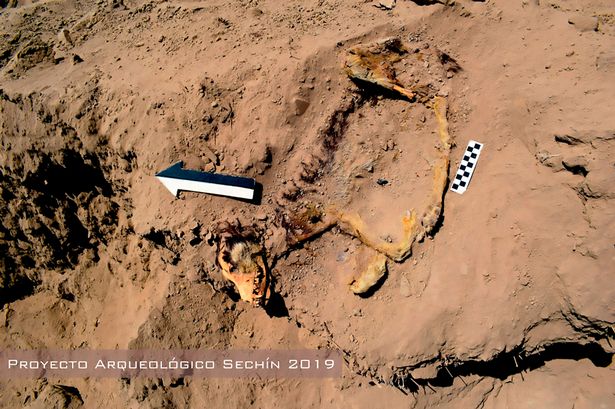PERU: Well-Preserved Dog Remains Unearthed in ancient Peruvian temple
In an ancient pre-Hispanic Peruvian site, the “unprecedented” well-preserved bones of a 1000-year-old dog are found.
In the main building, described as a temple in the reports, researchers from the Sechin Archeological Project found dog remains from the Casma Valley in northern Peru.
The Casma-Sechin culture is a concentration of pre-Hispanic ruins in the valleys of the Casma River.

Researchers said the dog (Canis lupus familiaris), whose breed and age are yet to be determined, is from the late occupation of the Sechin culture around 1,000 A.D.
The temple complex is believed to be much older, however, with scientists finding a staircase reportedly dating back some 4,000 years.
Project director Monica Suarez told reporters the dog is so well preserved its fur can be determined as “yellow and brown” and even the pads on its paws have been preserved.
She added that the dog “could be a native breed from the pre-Hispanic era” that had settled in the temple, adding: “It is believed it belongs to the era of the reoccupation of Sechin, specifically to the Casma culture, around 1,000 AD.”

Local media report the find has been described by the researchers as “unprecedented”.
The remains will be sent to the Peruvian Ministry of Country after being analyzed by the researchers.
The project is in the middle of its first phase and the researchers will take a break in November before starting again before the end of the year.
